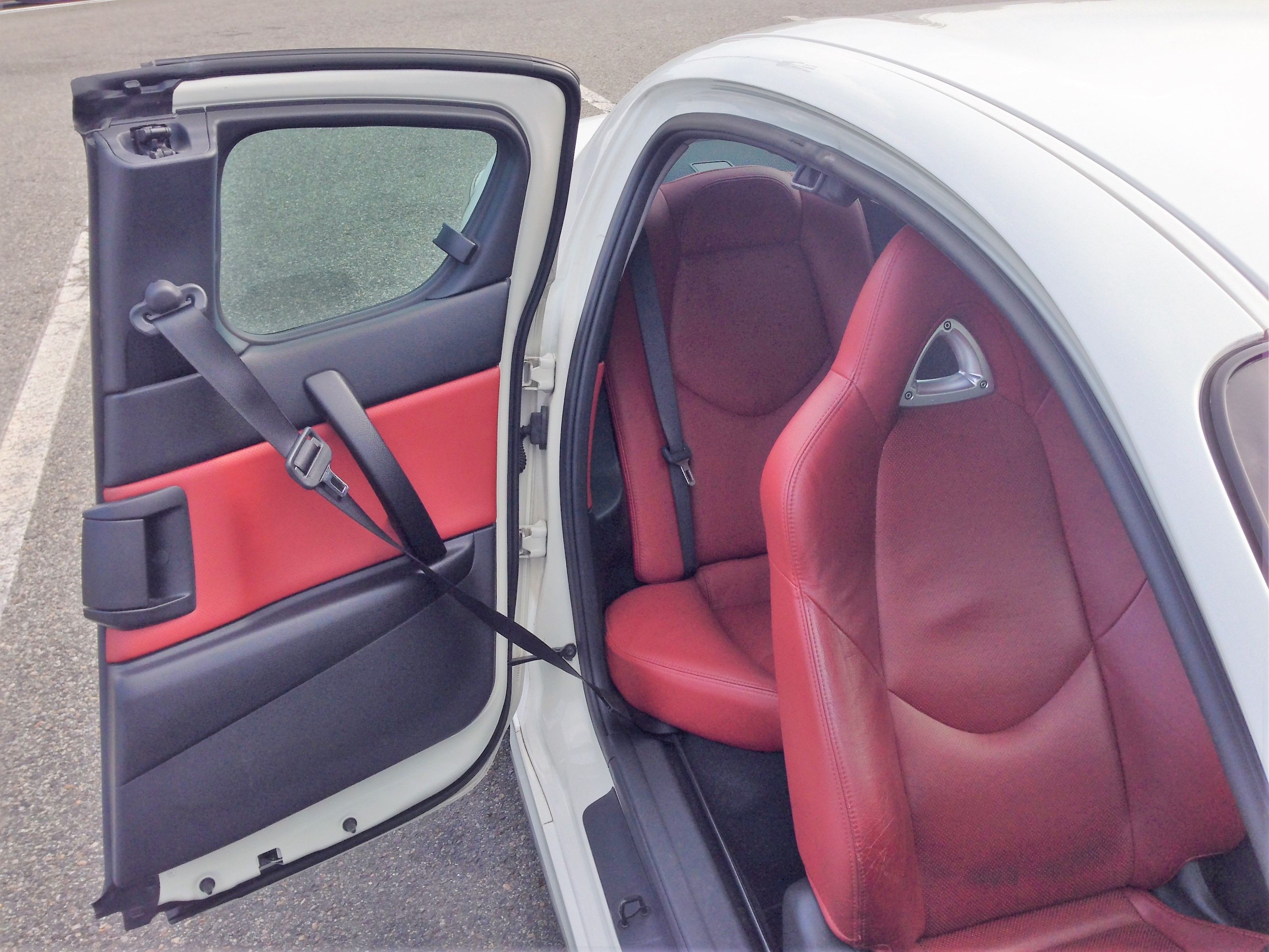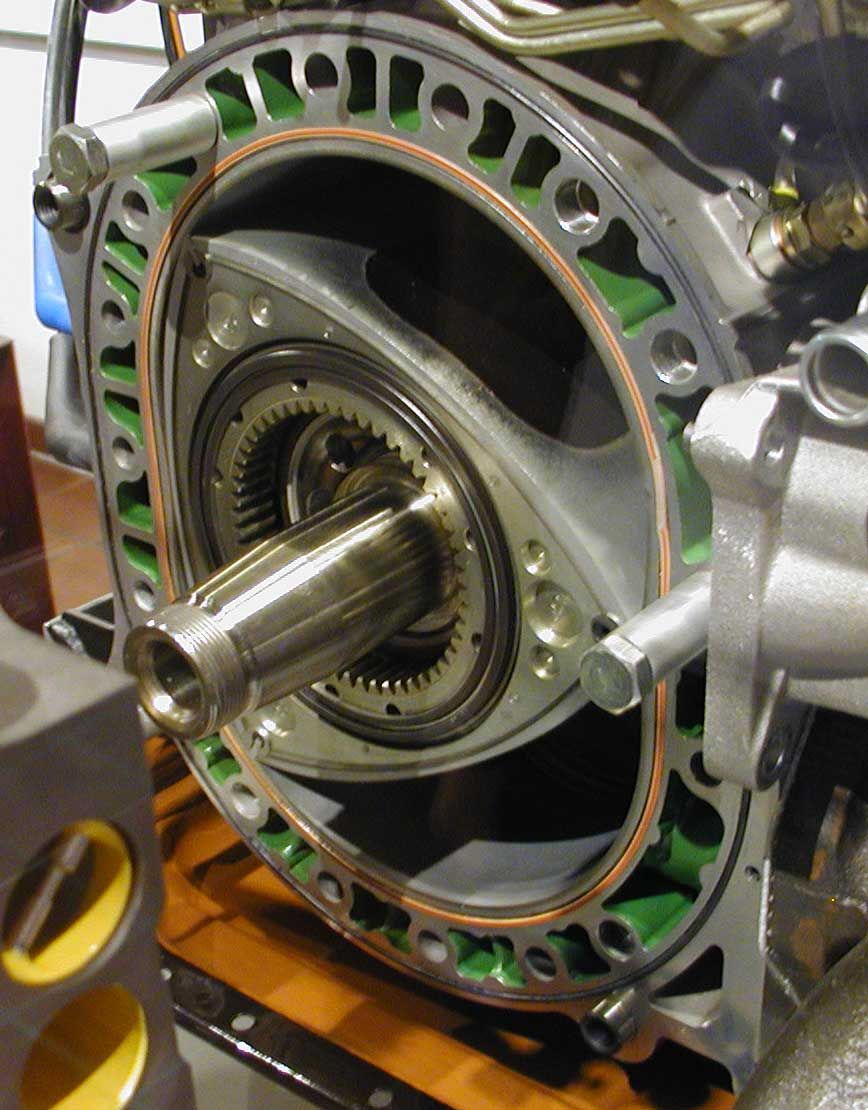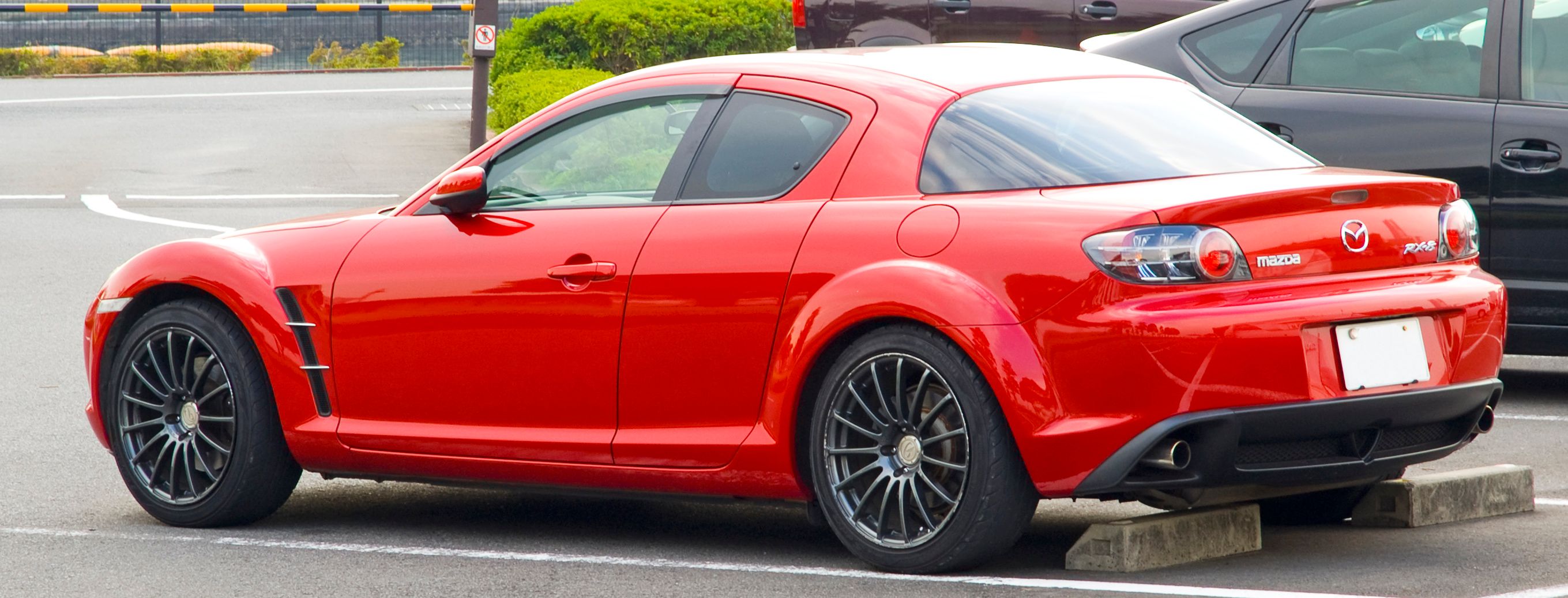Stunning looks and superb handling cannot make up for the fact that the Mazda RX-8 was dogged by one of the most unreliable and inefficient engines of the modern age – it proved to be the car’s undoing.
Let's take a closer look at the RX-8.
A great car – on paper
The RX-8 was an uncompromising and utterly unconventional quad coupé from Mazda, car that designers might have described as a free spirit in a sea of anodyne Euro boxes and staid Japanese sedans.
With a menacing low stance, bulging wheel arches, and highly distinctive rear, backward-hinged suicide, or freestyle doors, the RX-8 was a bold statement from the Japanese marque. The lack of a central ‘B’ pillar was also an unusual but entirely practical feature, proving that you could have an exciting-looking sports car without scrimping on good rear access and interior space.
But it was under the bonnet where the RX-8 really stood out. Installed in what Mazda called a front, mid-engine configuration sat the power unit – a small, high-output 1.3-liter rotary engine, capable of punching out 231 bhp.
It was a powerfully smooth, high-revving unit that helped shove the RX-8 from 0-60mph in 6.3 seconds in the manual version. In fact, it can still outshine many a fast sedan to this day.
Superb handling and grip
Thanks to its limited-slip differential and sophisticated combination of double wishbones at the front and rear multi-link suspension, you could confidently hustle the car into corners and exploit its limpet-like grip. The cherry on the cake was a cool sporty interior, relatively comfortable ride, and deliciously raspy exhaust note.
However, once you brought the car to a halt and looked under the hood, the fun invariably ended. Quite often in an abrupt manner.
And that’s because what made the RX-8 stand out from the rest of the pack was also its Achilles heel.
A rotary nightmare
‘Unreliable’ and ‘Japanese’ are not words you would normally include in the same sentence, but the Mazda RX-8 soon earned a reputation for catastrophic engine failures, high oil consumption, and woeful fuel economy.
Owners learned the hard way that they should warm the engine up gently before setting off. And something as mundane as rapidly switching the engine on and then off could cause ignition coil breakdown, which in turn led to engine failure.
Oil top-ups every 1,000 miles were an absolute must, and that’s because oil consumption was not accidental but actually an integral design feature. To be precise, oil was injected into the engine to help lubricate and seal the combustion chamber, thereby reducing wear. Despite this, half the cars reportedly needed replacement engines by the time they had amassed 50,000 miles on the clock.
If that doesn’t put you off from buying one now, short journeys were also discouraged as it resulted in build-up of carbon and a subsequent loss in compression.
The root cause of many of the engine’s problems was that not all the fuel burned in the combustion chamber – a quirk also known as a lack of thermal efficiency.
This also helped to explain the car’s notoriously high CO2 emissions and why, in the end, Mazda stopped selling the RX-8 in Europe in 2010, seven years after its launch.
But it’s not as if Mazda hadn’t been warned. As far back as 1961, the company signed a deal to develop the technology with NSU, the German car company that pioneered the Wankel rotary engine.
The advantages of the powertrain were clear at the time. The unit was compact and lightweight, and as there were fewer moving parts, it required fewer repairs, in theory at least.
The first proper test for the engine was in the mass-produced NSU Ro 80, a modern four-door sedan (sound familiar?) that debuted in 1967 and which, despite its futuristic looks and innovative technology, suffered from exactly the same problems that went on to plague the RX-8.
RX-8 ownership – a risky business
The RX-8 lurched on for another two years before Mazda finally killed it off in 2012, despite the company’s best efforts to stick with it and after more than 192,000 cars had been sold.
The future of the rotary engine itself hangs in the balance, although Mazda has not given up hope on it entirely, suggesting it may return to power hybrid drivetrains in the near future.
But unless you’re a devout fan and/or an assiduous car mechanic who is fully knowledgeable of the rotary engine’s quirks and demands, you are well-advised to give it a wide birth.
Even if you’re not hit with an expensive engine repair bill running into thousands of dollars or lucky enough to find a well-maintained example with a full service history, high running, and insurance costs should put you off from owning one.
And that’s because buying a second-hand RX-8 is riskier than playing a game of Russian Roulette with a group of sailors on a night-time soiree to Bangkok.




